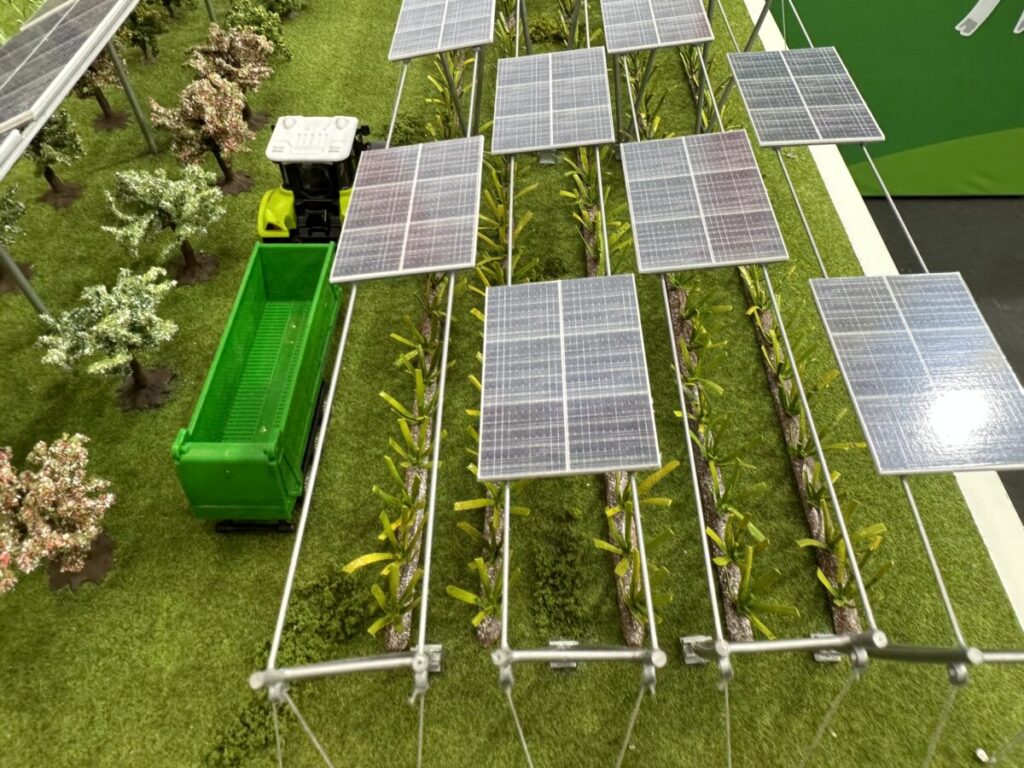A new paper shows that combining solar photovoltaics with arable farming can result in income gains over the life of a PV system in a wide range of locations across the UK. Researcher Aritra Ghosh explains pv magazine that the benefits of agrivoltaic energy are ‘multifaceted’.
Researchers studying the economic feasibility of agrivoltaics in the UK have found that installing PV on arable farms in many locations across the country could be feasible.
Aritra Ghosh, one of the three authors of the paper, shared pv magazine that while he believes the paper draws good conclusions about the economic benefits of agrivoltaics, more dynamic simulation tools could potentially make an even stronger case.
“I think one thing is still not clear: the microclimate that develops under the PV system can probably improve the PV yield that we currently obtain with the existing tools,” he said. “PV will certainly have a lot of positive impact from the crop underneath. because it will change the temperature, and that is significant.”
Also in the field of albedo, Ghosh suggested that a more dynamic simulation than the single value of 0.3 used in the paper could yield better results for agricultural voltaics. “If there are water droplets tomorrow morning, we will have further impact and the albedo will improve. In the data used it is 0.3, but in the morning it could be 0.5 or 0.6,” he said.
Ghosh added that his department is already conducting similar research comparing tracker-mounted systems with fixed agricultural voltaic systems, with publication expected in the future.
Ghosh and his fellow researchers from the University of Exeter ran simulations for fixed-tilted and vertical agricultural voltaic installations at 10 hypothetical locations in England, Scotland, Wales and Northern Ireland to investigate the potential value that PV could bring to farms in the United Kingdom. . The results appear in the article “The technical and economic potential for crop-based agrivoltaic energy in the UK,” published in Solar energy.
For the PV simulation, researchers used PVsyst simulation tools to assess the output of tilted and vertical systems. The general characteristics of the tilted system used in the simulation include 250 W modules located 3.5 meters above the ground, with a tilt angle of 34 degrees. Characteristics for the vertical system assume 250 W modules at 0.5 meters above the ground. Both systems were simulated with 360 bifacial modules and a fixed albedo of 0.3 was used.
To arrive at crop yield figures, the researchers used the cultivation system model Decision Support System for Agrotechnology Transfer (DSSAT) and selected cabbage as a crop that could be grown at all locations in the study. For each location, yields for a stand-alone PV system and a crop field without PV were also calculated.
Operating profit was calculated by multiplying the wholesale price for coal from UK government reports by the output of each site and doing the same for the revenue generated by the PV system, using the wholesale electricity price per kWh multiplied by the electricity generation from each of the locations. the systems, before operating costs are deducted. The simulation showed that in most locations annual operating profits could be more than doubled by the introduction of agrivoltaic energy on agricultural land. Southern locations such as Canterbury, Penryn and Brecon showed the greatest economic benefit.
The article also noted that “the benefits of agrivoltaic energy are multifaceted.” It concluded that the land equivalent ratio (LEV) for agricultural voltaics – an agricultural indicator measuring the yield benefit of multi-crop farms compared to single-crop farms – was higher in all regions of the UK compared to a stand-alone farm. PV system or an arable farm without PV.
This content is copyrighted and may not be reused. If you would like to collaborate with us and reuse some of our content, please contact: editors@pv-magazine.com.

